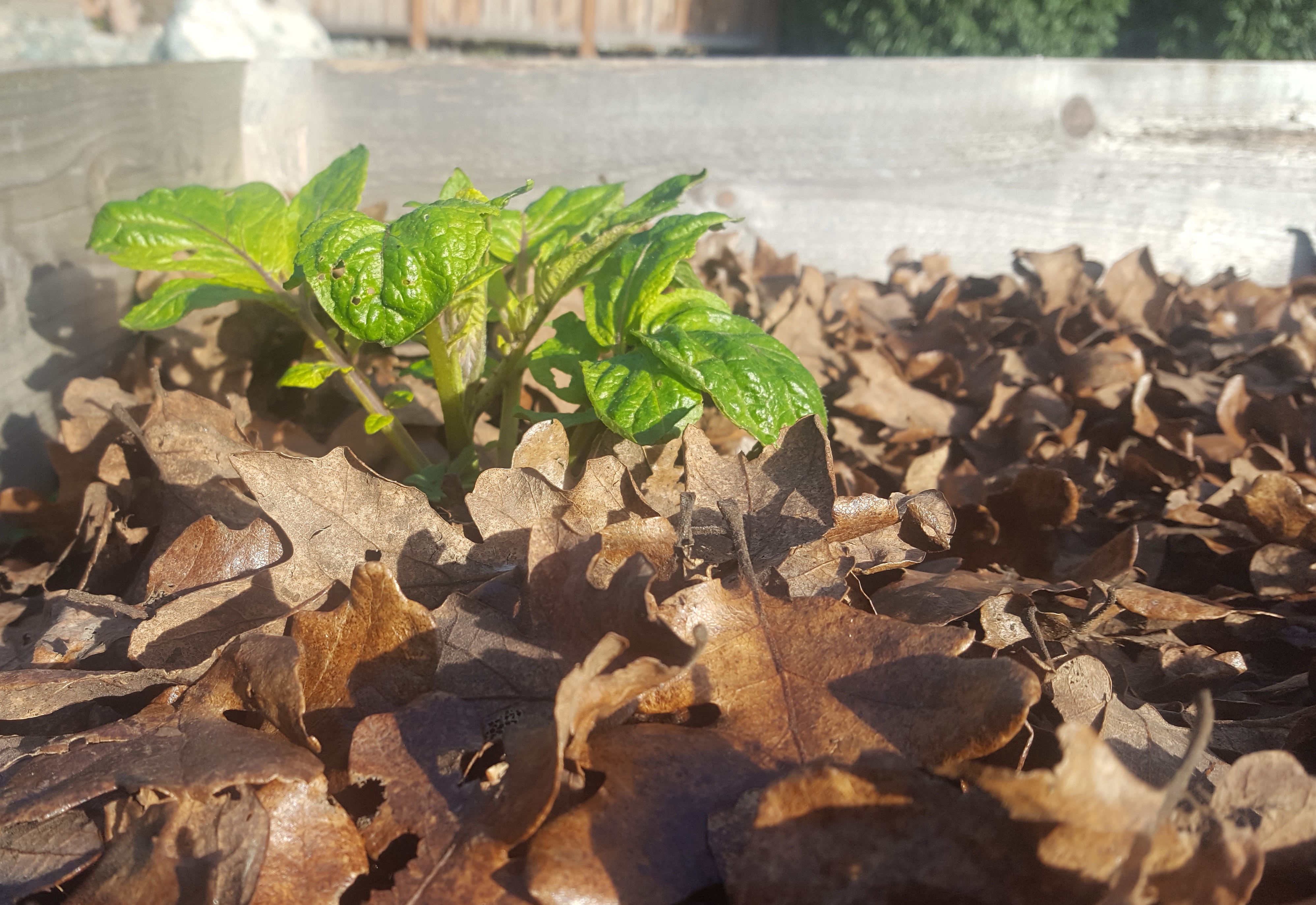Leaves in the Garden
I personally love the first big fall raking session! It feels so satisfying to rake leaves from my cherry, plum, and apple trees into big piles, let my kids jump in, and then put them on my raised beds. It feels like I am putting my garden to bed for the winter and it's great to see the garlic peak through before too long. My mother is a wonderful gardener and her blueberry patch has a phenomenal output. She swears it's because she puts so many fall leaves over the roots giving them loads of nutrients and protecting them. Luckily, the experts agree! The Head Gardener at the Gardens at HCP, Linda Petite, tells us to add leaf mulch to garden beds to add nutrients and encourage earthworms and beneficial microbes. Even mixed in your regular compost leaves are great to boost your compost pile - carbon-rich leaves balance high nitrogen compost ingredients like grass clippings. Pacific Horticulture College instructor, Diane Pierce, notes that leaves will help keep down weed seedlings and retain moisture in your garden.
As the Garden's resident ‘office girl', I always defer questions about gardening to the experts on staff. I was worried that due to my lazy gardening skills, I might be doing it wrong as I never mulch my leaves but simply dump them on my garden straight from the yard and then whatever hasn't decomposed when I plant in the spring I dig into the soil. I turned to Linda Gilkeson who teaches our very popular ‘Year Round Harvest' Community Education Class to help answer my questions. You can also find her books in our gift shop. Here is her recent post about leaves which she kindly allowed us to share with you:
“Fallen leaves are the best mulch for summer and winter and they are free, weed free and relatively easy to move around because they are light weight. Collect enough to mulch the garden and flower beds for winter and put aside a supply for next summer when we will all be scrambling to find enough mulch for the dry season. I stockpile leaves I collect in dry weather for next summer and store them where they stay dry (in giant plastic bags, under a tarp, etc.) so they won't decompose. Wet leaves are excellent for immediate use as winter mulch because they stay in place better when it is windy. If you can get lots of leaves, also layer them into your compost pile or make leaf mold by composting whole bins of leaves. Despite what you might have read, all leaves are excellent with the only questionable leaves being those of black walnut trees, which should be well composted before they go on a garden. Tomatoes, apples and a few other garden plants can be sensitive to a compound called juglone in the leaves (other walnuts are not a problem). Don't shred leaves for winter mulches because we want a fluffy insulating layer. The bigger the leaves, even huge ones from big-leaf maples, the less they are compacted by rain. If you are collecting leaves for compost, however, shredding them or running a lawn mower back and forth over them first will make them decompose more quickly.”
I asked some other staffers for help. Master Gardener Paula McCormick, who also runs our amazing children's programs, agrees with me - the first leaves to fall are special! They are fresh and ready for running through. With kids, gather some leaves and stuff an old pillow case, burlap sack, or plastic bag. Draw a face on the bag and make a head for your fall scarecrow. Everyone needs one of these in their garden or front step!
Raking leaves is a big job though to get those great mulches. Paula says to use a mulching blade and bag on your lawnmower to run over leaves on your lawn, then use these mulched leaves to cover your newly planted garlic. This helps to insulate any new shoots that emerge from the soil and protect them from frost damage over winter.
Leaf mulch is good to add to garden beds this time of year. In a vegetable garden, this mulch can be forked into the soil where no crops are growing to increase organic matter for spring plantings (the microbes in the soil eat the leaf pieces and hold it until spring when it can be used by emerging crops). Leaf mulch can also be spread in perennial, shrub and tree borders/beds to protect the roots from cold and suppress unwanted weeds. The mulch does break down over time and will be ready for spring planting. It is an easy way to amend garden soil and increase its fertility and structure.
I still have one apple tree in my backyard with quite a few leaves left – mid-November. Raking season on Canada's West Coast does seem to drag on a bit but it's so useful for all gardeners to use – from beginners like me to the real experts! At the Gardens at HCP, we use the leaves onsite but can never get enough. The District of Saanich brings us loads of leaves they pick up on the streets for us to use which will be arriving any day. Come by sometime over the winter to see the leaves in action!
Question: Do you mulch your leaves or “leaf” them whole? Please comment below – we would love to hear your tips, questions, and comments!
By: Dana Gage


